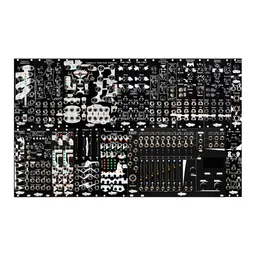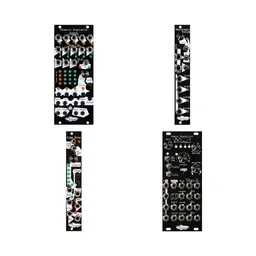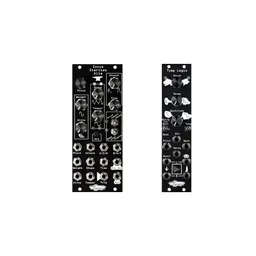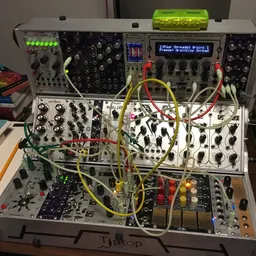We often get asked what modules someone should buy. Our first question is always “what do you want to do with the system?” Today we start a new series where we walk though some recommendations we have for setups for different genres of music, with a focus on NE modules. We’ll talk through a smaller case and then a slightly more elaborate case and discuss the differences, too.
We’re going to start out with techno: if you’ve been hoping to build out a system for techno, industrial, or another four-on-the-floor-focused genre, the next few episodes are for you. Today, we’re going to cover percussion and synth voices, and cover sequencing, mixing, and effects in future episodes. At the end of the series, we’ll have full 6U/84HP and a 3U/60HP recommended systems that you can build off of, modify, or just take inspiration from when building your own system.
Heavy hitters: percussion
Without percussion, you don’t have techno, so it’s a perfect place to start when planning out our system. I love having as much percussion in my system as possible – the more the merrier – but in reality it’s possible to get fantastic results with just two or three percussion voices.
Currently, I tend to use one or two Tymp Legio and an Incus Iteritas Alia. The Tymp Legios are quite flexible and have the added bonus of being able to mix into each other, so my whole percussion section doesn’t require a submixer if I want to run it through a compressor. The Tymps can also duck incoming audio in Boot (kick) and Cat (snare) mode, so I can duck melodic things out of the way as necessary. Generally, I’ll use one Tymp as a kick, another as a hat, and Incus as a snare or other percussive element.

I absolutely love using complete voices for percussion, because it adds a whole lot of performability to my percussion section. Just turning the decay of my kick all the way down for a few bars, or slowly adding noise to my snare is a great way to create a dramatic change or an evolving buildup. In the past, I’ve used sampler modules from other manufacturers like the Assimil8or or Sample Drum for extra percussive elements to great effect – but I always find myself adding at least a BIA, an Incus, or a Tymp in for kick duty to add that performable, configurable backbone to a patch.
Another great bonus is that Noise Engineering percussion voices play double duty, and can act as melodic voices or percussive elements. If a particular patch doesn’t need, say, a third percussion voice, you have an extra element that can play a melodic line or add some beef to the bassline. They can also all be tuned across a huge range, so your percussion can always be in key.
Melodic voices
When it comes to choosing lead lines, it’s all down to preference, but there are a few different options in the Noise Engineering arsenal.
Personally, I always reach for a Loquelic Iteritas Percido when given the chance (and have for the last six years since its release) as it’s my favorite melodic voice in my (rather absurdly large) Eurorack system. It’s so easy to take LIP from dark and brooding to brash and bright with a single parameter, and its simple envelope makes it incredibly easy to dial in on the fly.
If you want something more compact – or want another voice to complement your LIP – the Alia line has lots to offer. If you want to go the most industrial route, Manis Iteritas Alia takes the concept of a supersaw to the extreme, offering big industrial hits and a truly unique sound. While it’s famous for being aggressive, it has a softer side, too, thanks to its built-in lowpass filter and waveshaping capabilities.
If you want to go another direction, Debel Iteritas Alia was designed with FM plucks (and tacos) in mind. I love bell-like tones as a lead in my techno patches, and Debel makes that incredibly easy.
The great thing about picking up an Alia is that you can swap the firmwares around to try different voices. Say you pick up an Incus Iteritas Alia but want to try out Debel as a lead line for an afternoon: you can easily swap the firmware at the Customer Portal and see what Debel has to offer.
The system so far
Here’s what we’ve put together so far:

There’s a lot of empty space! We’ve got our sound creation covered with three percussion sources (Incus Iteritas Alia and two Tymp Legios) and two melodic voices (Loquelic Iteritas Percido and Debel Iteritas Alia), but we still need to cover all of our sequencing, mixing, and effects.
In our small case, I’ve opted for Tymp Legio and Incus Iteritas Alia: both have settings that work well for leads and percussion, and with a bit of modulation Incus can easily play double duty.

Check back soon for the next parts in this series where we’ll finish out our rack.






